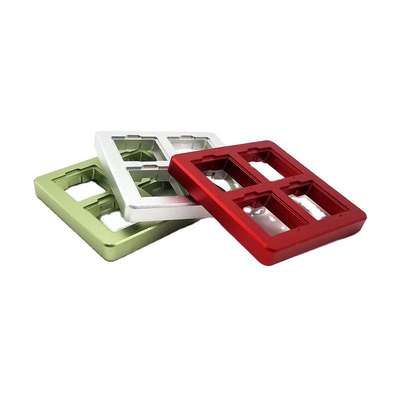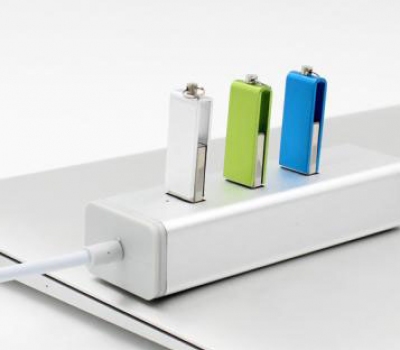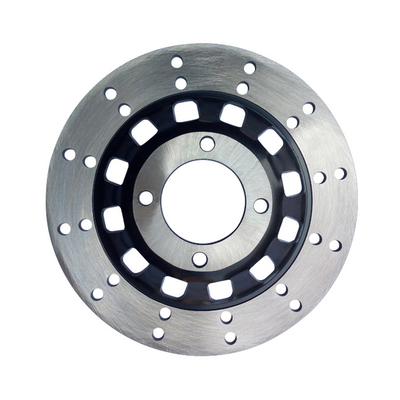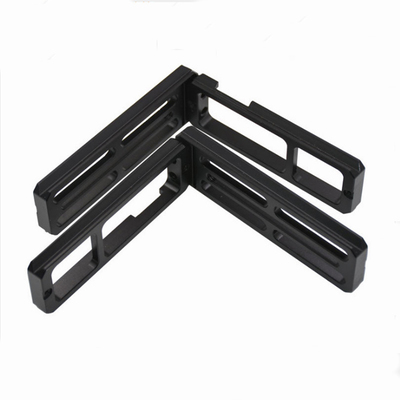Thermoplastics List For Injection Molding
There are many types of thermoplastics, even if the same type is different due to the different proportions of resin molecules and additives, its use and process characteristics are also different. In addition, in order to change the characteristics of the original varieties, various chemical methods such as copolymerization and crosslinking are commonly used to introduce a certain percentage of other monomers or polymers into the original resin structure to change the original resin structure into a new one. Modified products with improved physical properties and processability.
For example, ABS is a modified copolymer after introducing the second and third monomers such as acrylonitrile and butadiene into the polystyrene molecule. It can be regarded as modified polystyrene, which is superior to polystyrene. Comprehensive performance, process characteristics.
Due to the wide variety of thermoplastics and their complex properties, even the same type of plastics can only be used for injection molding and extrusion. Therefore, this article mainly introduces various types of thermoplastics for injection molding.
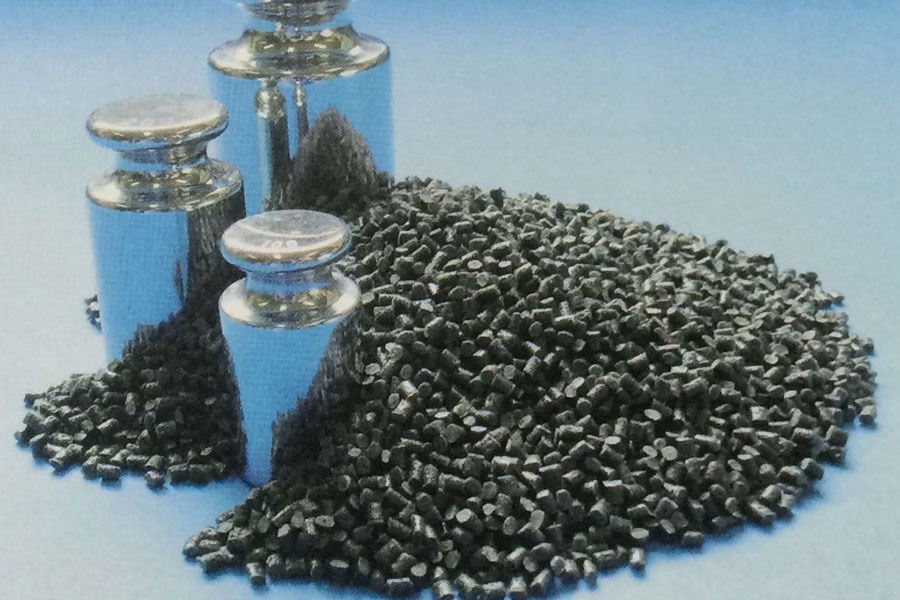
Shrinkage
The form and calculation of thermoplastic molding shrinkage are as mentioned above, and the factors that affect thermoplastic molding shrinkage are as follows:
- 1. Plastic types: In the molding process of thermoplastic plastics, there are still volume changes caused by crystallization, strong internal stress, large residual stress frozen in the plastic parts, strong molecular orientation and other factors, so compared with thermosetting plastics, the shrinkage rate is Larger, the shrinkage range is wide, and the directionality is obvious. In addition, the shrinkage after molding, annealing or humidity conditioning is generally greater than that of thermosetting plastics.
- 2. When the plastic part is molded, the molten material contacts the surface of the cavity and the outer layer is immediately cooled to form a low-density solid shell. Due to the poor thermal conductivity of the plastic, the inner layer of the plastic part is slowly cooled to form a high-density solid layer with large shrinkage. Therefore, the wall thickness, slow cooling, and high-density layer thickness will shrink more. In addition, the presence or absence of inserts and the layout and quantity of inserts directly affect the direction of material flow, density distribution and shrinkage resistance. Therefore, the characteristics of plastic parts have a greater impact on shrinkage and directionality.
- 3. Factors such as the form, size and distribution of the feed inlet directly affect the direction of material flow, density distribution, pressure maintaining and shrinking effect and molding time. Direct feed ports and feed ports with large cross-sections (especially thicker cross-sections) have less shrinkage but greater directivity, and shorter feed ports with shorter width and length have less directivity. The ones that are close to the feed inlet or parallel to the direction of the material flow will shrink more.
- 4. Molding conditions The mold temperature is high, the molten material cools slowly, the density is high, and the shrinkage is large. Especially for crystalline materials, the shrinkage is greater due to high crystallinity and large volume changes. The mold temperature distribution is also related to the internal and external cooling and density uniformity of the plastic part, which directly affects the size and direction of the shrinkage of each part. In addition, holding pressure and time also have a greater impact on contraction, and the contraction is smaller but the directionality is larger when the pressure is high and the time is long. The injection pressure is high, the viscosity difference of the molten material is small, the interlayer shear stress is small, and the elastic rebound after demolding is large, so the shrinkage can also be reduced by an appropriate amount. The material temperature is high, the shrinkage is large, but the directionality is small. Therefore, adjusting the mold temperature, pressure, injection speed and cooling time during molding can also appropriately change the shrinkage of the plastic part.
According to the shrinkage range of various plastics, the wall thickness and shape of the plastic part, the size and distribution of the inlet form, the shrinkage rate of each part of the plastic part is determined according to experience, and then the cavity size is calculated. For high-precision plastic parts and when it is difficult to grasp the shrinkage rate, the following methods should generally be used to design the mold:
- ① Take a smaller shrinkage rate for the outer diameter of the plastic part, and a larger shrinkage rate for the inner diameter, so as to leave room for correction after the test mold.
- ②The form, size and molding conditions of the gating system are determined by the trial mold.
- ③The dimensional change of the plastic part to be post-processed shall be determined by post-processing (measurement must be 24 hours after demolding).
- ④ Correct the mold according to the actual shrinkage.
- ⑤ Retry the mold and appropriately change the process conditions to slightly modify the shrinkage value to meet the requirements of the plastic part.
Fluidity
1. Thermoplastic fluidity can generally be analyzed from a series of indexes such as molecular weight, melt index, Archimedes spiral flow length, apparent viscosity and flow ratio (process length/plastic part wall thickness). Small molecular weight, wide molecular weight distribution, poor molecular structure regularity, high melt index, long spiral flow length, low apparent viscosity, high flow ratio, good fluidity, plastics with the same product name must check their instructions to determine whether their fluidity is applicable For injection molding. According to mold design requirements, the fluidity of commonly used plastics can be roughly divided into three categories:
- ①Good fluidity nylon, polyethylene, polystyrene, polypropylene, cellulose acetate, poly(4) methylpentene;
- ②Medium fluidity polystyrene series resin (such as ABS, AS), plexiglass, polyoxymethylene, polyphenylene ether;
- ③Poor fluidity Polycarbonate, rigid polyvinyl chloride, polyphenylene ether, polysulfone, polyarylsulfone, fluoroplastics.
2. The fluidity of various plastics also changes due to various molding factors. The main influencing factors are as follows:
- ①Higher material temperature increases fluidity, but different plastics have their own differences. Polystyrene (especially those with high impact resistance and high MFR value), polypropylene, nylon, plexiglass, modified polystyrene (such as The fluidity of plastics such as ABS, AS), polycarbonate, and cellulose acetate varies greatly with temperature. For polyethylene and polyoxymethylene, the temperature increase or decrease has little effect on its fluidity. Therefore, the former should adjust the temperature during molding to control fluidity.
- ② When the pressure of injection molding is increased, the molten material is subjected to the shearing effect and the fluidity also increases, especially polyethylene and polyformaldehyde are more sensitive, so the injection pressure should be adjusted to control the fluidity during molding.
- ③The form, size, layout, cooling system design of the mold structure, the flow resistance of the molten material (such as the surface finish, the thickness of the channel section, the shape of the cavity, the exhaust system) and other factors directly affect the molten material in the cavity The actual fluidity inside, where the molten material is promoted to lower the temperature and increase the fluidity resistance, the fluidity will decrease.
When designing the mold, a reasonable structure should be selected according to the fluidity of the plastic used. During molding, the material temperature, mold temperature, injection pressure, injection speed and other factors can also be controlled to appropriately adjust the filling condition to meet the molding needs.
Crystallinity
Thermoplastics can be divided into crystalline plastics and non-crystalline (also known as amorphous) plastics according to their no crystallization during condensation.
The so-called crystallization phenomenon refers to the fact that when the plastic changes from a molten state to a condensation state, the molecules move independently and are completely in a disordered state. The molecules stop moving freely, press a slightly fixed position, and have a tendency to make the molecular arrangement a regular model. This phenomenon.
As the standard for judging the appearance of these two types of plastics, it depends on the transparency of the thick-walled plastic parts. Generally, crystalline materials are opaque or translucent (such as polyoxymethylene, etc.), and amorphous materials are transparent (such as organic glass, etc.) . But there are exceptions. For example, poly(4) methylpentene is a crystalline plastic but has high transparency, and ABS is an amorphous material but not transparent.
When designing molds and selecting injection molding machines, pay attention to the following requirements and precautions for crystalline plastics:
- ① It takes a lot of heat to raise the material temperature to the molding temperature, and equipment with large plasticizing ability is needed.
- ②When cooling back, it emits a lot of heat, so it should be cooled sufficiently.
- ③The specific gravity difference between the molten state and the solid state is large, the molding shrinkage is large, and shrinkage and pores are prone to occur.
- ④ Fast cooling, low crystallinity, small shrinkage and high transparency. The crystallinity is related to the wall thickness of the plastic part, and the wall thickness is slow to cool, the crystallinity is high, the shrinkage is large, and the physical properties are good. Therefore, the mold temperature of the crystalline material must be controlled as required.
- ⑤Significant anisotropy and large internal stress. Molecules that are not crystallized after demolding have a tendency to continue to crystallize, are in an energy imbalance state, and are prone to deformation and warpage.
- ⑥The crystallization temperature range is narrow, and it is easy to cause unmelted powder to be injected into the mold or to block the feed port.
Heat-sensitive plastics and easily hydrolyzed plastics
Heat sensitivity refers to the tendency of certain plastics to be more sensitive to heat. When heated at high temperatures for a long time or the feed port section is too small, when the shearing effect is large, the material temperature increases and the tendency of discoloration, degradation, and decomposition occurs. Plastic is called heat-sensitive plastic. Such as rigid polyvinyl chloride, polyvinylidene chloride, vinyl acetate copolymer, polyoxymethylene, polychlorotrifluoroethylene and so on. Heat-sensitive plastics produce monomers, gases, solids and other by-products during decomposition. In particular, some decomposition gases have irritating, corrosive or toxic effects on the human body, equipment, and molds. Therefore, attention should be paid to mold design, injection molding machine selection, and molding. Screw injection molding machine should be used. The section of the pouring system should be large. The mold and barrel should be chrome-plated. There should be no dead ends. The molding temperature must be strictly controlled. Stabilizer, weaken its heat-sensitive performance.
Some plastics (such as polycarbonate) will decompose under high temperature and high pressure even if they contain a small amount of water. This property is called easy hydrolysis, which must be heated and dried in advance.
Stress cracking and melt fracture
Some plastics are sensitive to stress. They are prone to internal stress during molding and are brittle and easy to crack. Plastic parts will crack under the action of external force or solvent. For this reason, in addition to adding additives to the raw materials to improve crack resistance, attention should be paid to drying the raw materials, and the molding conditions should be selected reasonably to reduce internal stress and increase crack resistance. And should choose a reasonable shape of plastic parts, it is not appropriate to install inserts and other measures to minimize stress concentration.
When designing the mold, the demolding angle should be increased, and a reasonable feed inlet and ejection mechanism should be selected. The material temperature, mold temperature, injection pressure and cooling time should be adjusted appropriately during molding, and try to avoid demolding when the plastic part is too cold and brittle , After molding, the plastic parts should also be subjected to post-treatment to improve crack resistance, eliminate internal stress and prohibit contact with solvents.
When a polymer melt with a certain melt flow rate passes through the nozzle hole at a constant temperature and its flow rate exceeds a certain value, obvious lateral cracks on the surface of the melt are called melt fracture, which damages the appearance and physical properties of the plastic part. Therefore, when selecting polymers with high melt flow rate, the cross-section of the nozzle, runner, and feed opening should be increased to reduce the injection speed and increase the material temperature.
Thermal performance and cooling rate
Various plastics have different specific heat, thermal conductivity, heat distortion temperature and other thermal properties. Plasticizing with a high specific heat requires a large amount of heat, and an injection molding machine with a large plasticizing capacity should be used. The cooling time of the plastic with high heat distortion temperature can be short and the demoulding is early, but the cooling deformation should be prevented after demolding. Plastics with low thermal conductivity have a slow cooling rate (such as ionic polymers, etc.), so they must be sufficiently cooled to enhance the cooling effect of the mold.
Hot runner molds are suitable for plastics with low specific heat and high thermal conductivity. Plastics with large specific heat, low thermal conductivity, low thermal deformation temperature, and slow cooling rate are not conducive to high-speed molding. Appropriate injection molding machines and enhanced mold cooling must be selected.
All kinds of plastics are required to maintain an appropriate cooling rate according to their types, characteristics and shapes of plastic parts. Therefore, the mold must be equipped with heating and cooling systems according to the molding requirements to maintain a certain mold temperature. When the material temperature increases the mold temperature, it should be cooled to prevent the plastic part from deforming after demolding, shorten the molding cycle, and reduce the crystallinity.
When the plastic waste heat is not enough to keep the mold at a certain temperature, the mold should be equipped with a heating system to keep the mold at a certain temperature to control the cooling rate, ensure fluidity, improve filling conditions or control the plastic parts to cool slowly. Prevent uneven cooling inside and outside of thick-walled plastic parts and increase crystallinity.
For those with good fluidity, large molding area and uneven material temperature, depending on the molding conditions of the plastic part, sometimes it needs to be heated or cooled alternately or locally heated and cooled. To this end, the mold should be equipped with a corresponding cooling or heating system.
Hygroscopicity
Because there are various additives in plastics, which make them have different degrees of affinity for moisture, plastics can be roughly divided into two types: moisture absorption, moisture adhesion, and non-absorption and non-stick moisture. The water content in the material must be controlled within the allowable range. Otherwise, the moisture will become gas or hydrolyze under high temperature and high pressure, which will cause the resin to foam, decrease the fluidity, and have poor appearance and mechanical properties. Therefore, hygroscopic plastics must be preheated with appropriate heating methods and specifications as required, and infrared radiation is required to prevent re-absorption of moisture during use.
Link to this article:Thermoplastics List For Injection Molding
Reprint Statement: If there are no special instructions, all articles on this site are original. Please indicate the source for reprinting:https://www.cncmachiningptj.com/,thanks!
 3, 4 and 5-axis precision CNC machining services for aluminum machining, beryllium, carbon steel, magnesium, titanium machining, Inconel, platinum, superalloy, acetal, polycarbonate, fiberglass, graphite and wood. Capable of machining parts up to 98 in. turning dia. and +/-0.001 in. straightness tolerance. Processes include milling, turning, drilling, boring, threading, tapping, forming, knurling, counterboring, countersinking, reaming and laser cutting. Secondary services such as assembly, centerless grinding, heat treating, plating and welding. Prototype and low to high volume production offered with maximum 50,000 units. Suitable for fluid power, pneumatics, hydraulics and valve applications. Serves the aerospace, aircraft, military, medical and defense industries.PTJ will strategize with you to provide the most cost-effective services to help you reach your target,Welcome to Contact us ( [email protected] ) directly for your new project.
3, 4 and 5-axis precision CNC machining services for aluminum machining, beryllium, carbon steel, magnesium, titanium machining, Inconel, platinum, superalloy, acetal, polycarbonate, fiberglass, graphite and wood. Capable of machining parts up to 98 in. turning dia. and +/-0.001 in. straightness tolerance. Processes include milling, turning, drilling, boring, threading, tapping, forming, knurling, counterboring, countersinking, reaming and laser cutting. Secondary services such as assembly, centerless grinding, heat treating, plating and welding. Prototype and low to high volume production offered with maximum 50,000 units. Suitable for fluid power, pneumatics, hydraulics and valve applications. Serves the aerospace, aircraft, military, medical and defense industries.PTJ will strategize with you to provide the most cost-effective services to help you reach your target,Welcome to Contact us ( [email protected] ) directly for your new project.

- 5 Axis Machining
- Cnc Milling
- Cnc Turning
- Machining Industries
- Machining Process
- Surface Treatment
- Metal Machining
- Plastic Machining
- Powder Metallurgy Mold
- Die Casting
- Parts Gallery
- Auto Metal Parts
- Machinery Parts
- LED Heatsink
- Building Parts
- Mobile Parts
- Medical Parts
- Electronic Parts
- Tailored Machining
- Bicycle Parts
- Aluminum Machining
- Titanium Machining
- Stainless Steel Machining
- Copper Machining
- Brass Machining
- Super Alloy Machining
- Peek Machining
- UHMW Machining
- Unilate Machining
- PA6 Machining
- PPS Machining
- Teflon Machining
- Inconel Machining
- Tool Steel Machining
- More Material

